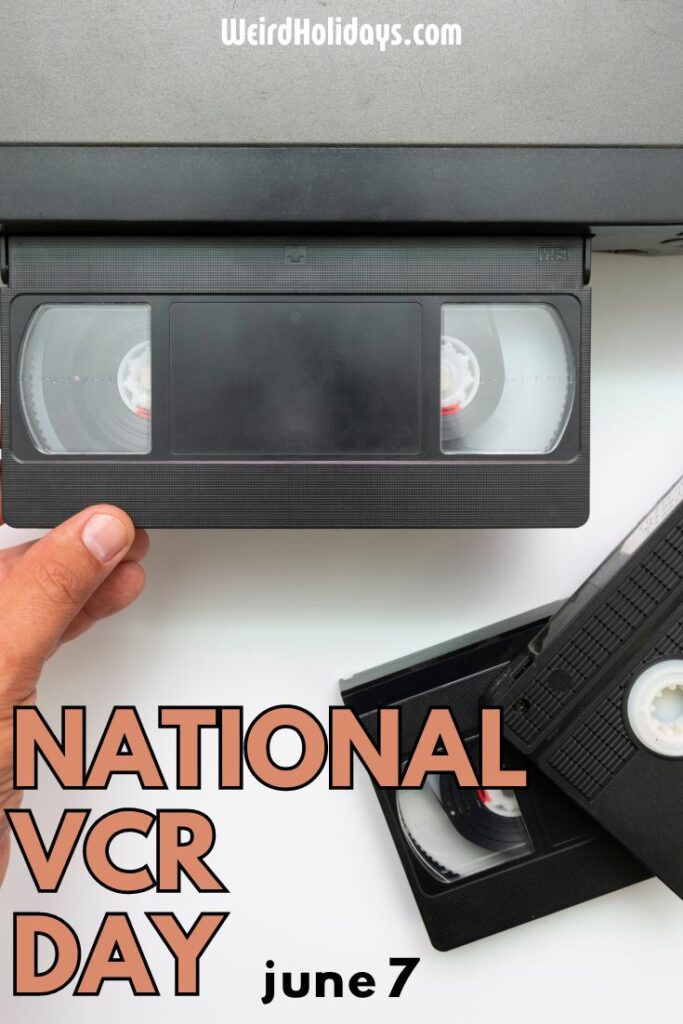National VCR Day (June 7)
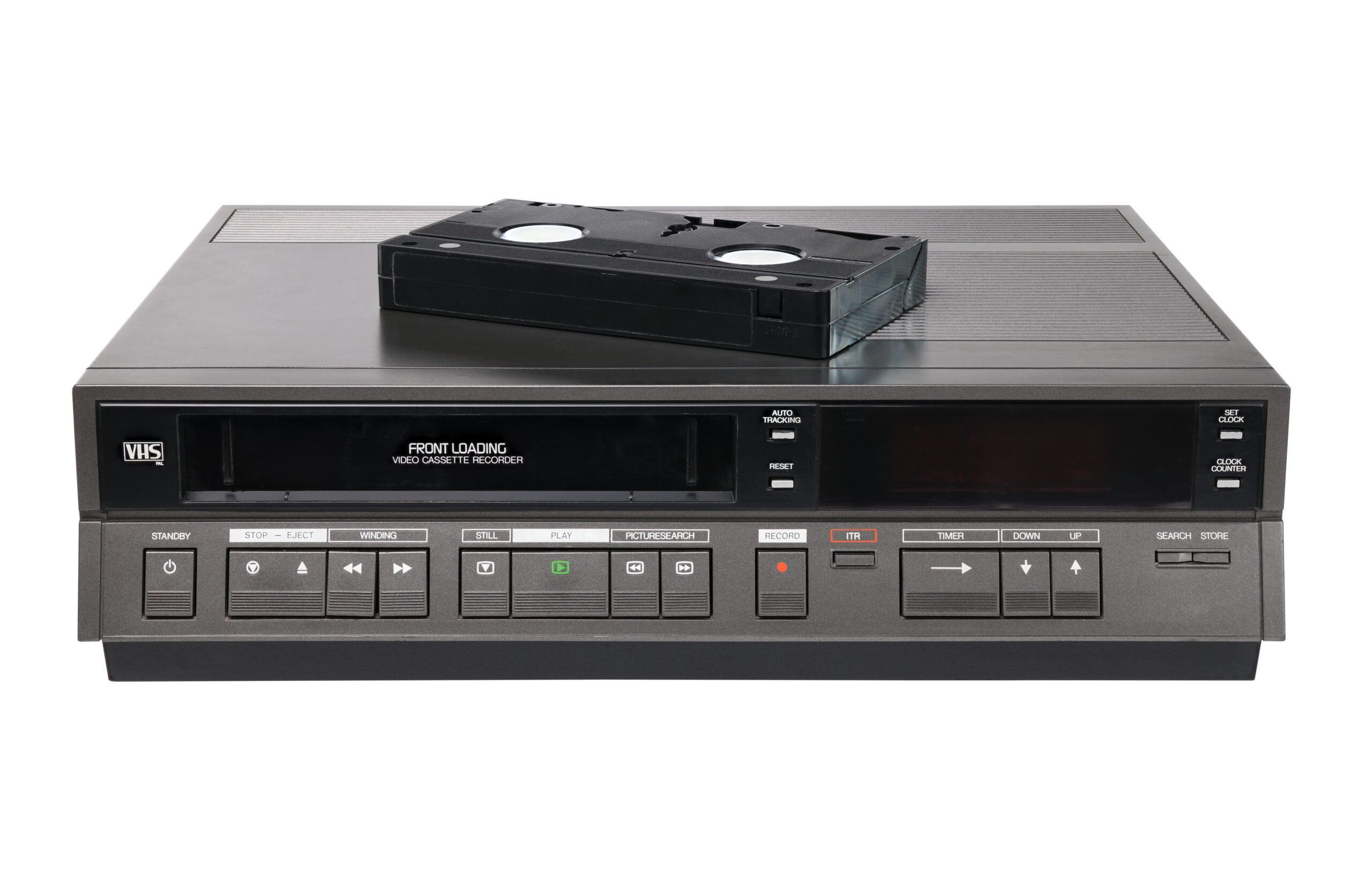
National VCR Day celebrates the iconic videocassette recorder, a once-revolutionary device that changed how we watched TV and movies.
From recording your favorite show to rewinding a rented VHS tape before returning it, the VCR shaped how families experienced entertainment at home.
While obsolete now, its influence is still felt in the way we stream and binge today. It is one of the weird holidays in June that gives us a reason to reflect and rewind.
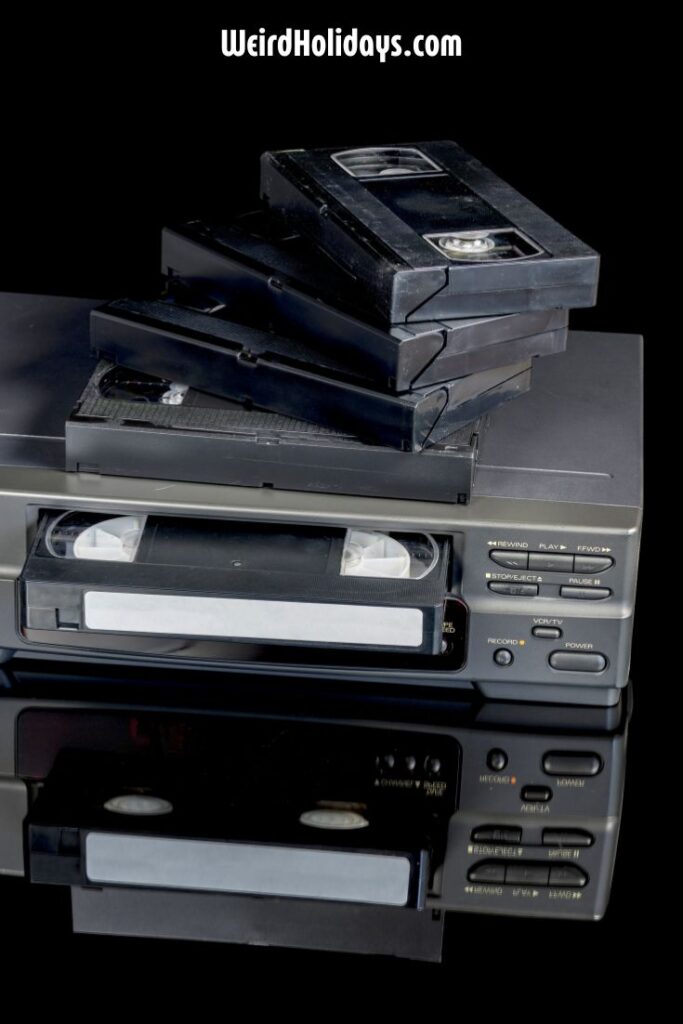
When is the Holiday?
National VCR Day is celebrated each year on June 7th.
Who Invented It?
The origin of the holiday isn’t well-documented. It likely started with retro tech fans or media preservation groups celebrating the cultural impact of the VCR.
Like many niche observances, its exact founder remains unknown, but its nostalgia factor keeps it going.
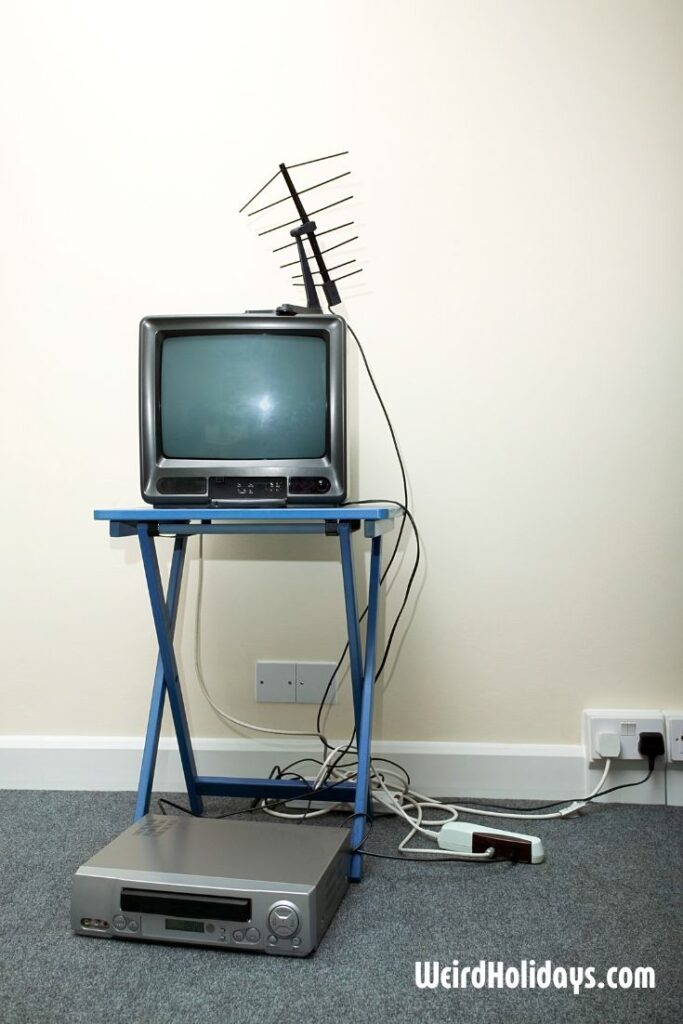
The History of the Holiday
While the holiday’s origin is unclear, its purpose is rooted in remembering the cultural and technological significance of the VCR.
The VCR boom began in the 1970s with Sony’s Betamax and JVC’s VHS.
VHS became the household standard by the 1980s, giving families control over their TV time and access to home movie rentals.
The VCR didn’t just change how we watched, it reshaped our relationship with media.
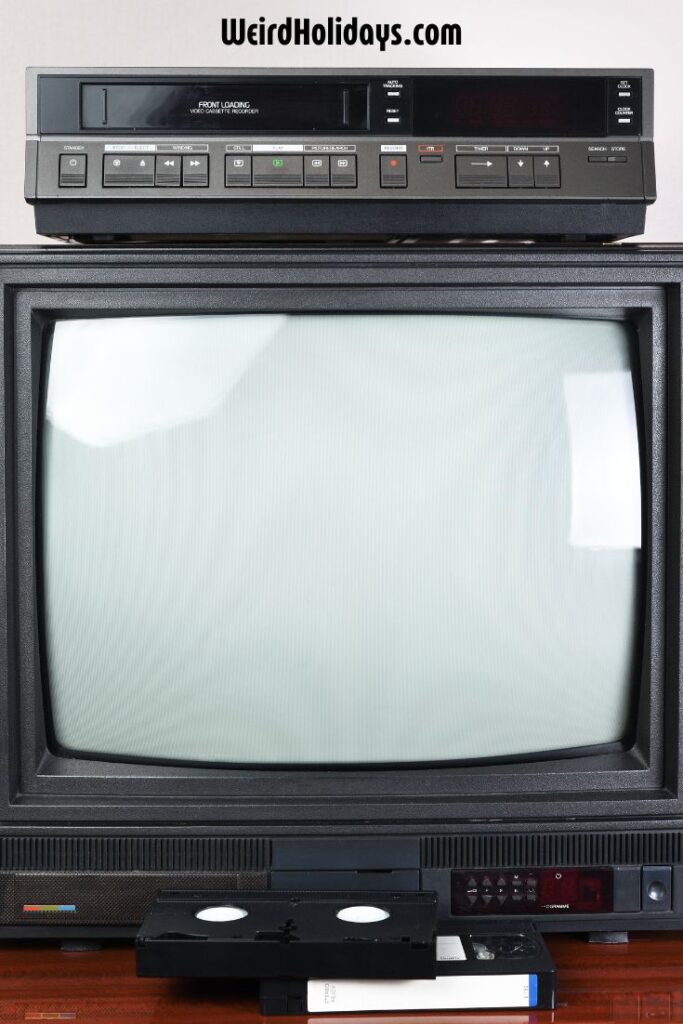
Top 5 Facts About The Holiday
- The first consumer VCR was released by Sony in 1975 (Betamax).
- VHS vs. Betamax became one of the most famous format wars in tech history.
- Blockbuster Video, founded in 1985, capitalized on the VCR boom.
- The last VCR was manufactured in 2016 by Funai Electric.
- The word “rewind” became a pop culture staple—remember “Be Kind, Rewind”?

Activities to Celebrate
- Watch a VHS tape on an old VCR—if you still have one.
- Host a retro movie night with popcorn and ’80s snacks.
- Digitize home videos to preserve old memories.
- Post your favorite VCR story on social media with #NationalVCRDay.
- Display old tapes or equipment for a fun home exhibit.
- Have a tape swap with fellow retro collectors.
- Throw a themed party with ’80s/’90s music and fashion.
- Teach kids about analog tech—they’ve likely never used a tape!
- Visit or support a museum that preserves media history.
- Fix up an old VCR or learn how to in an online tutorial.
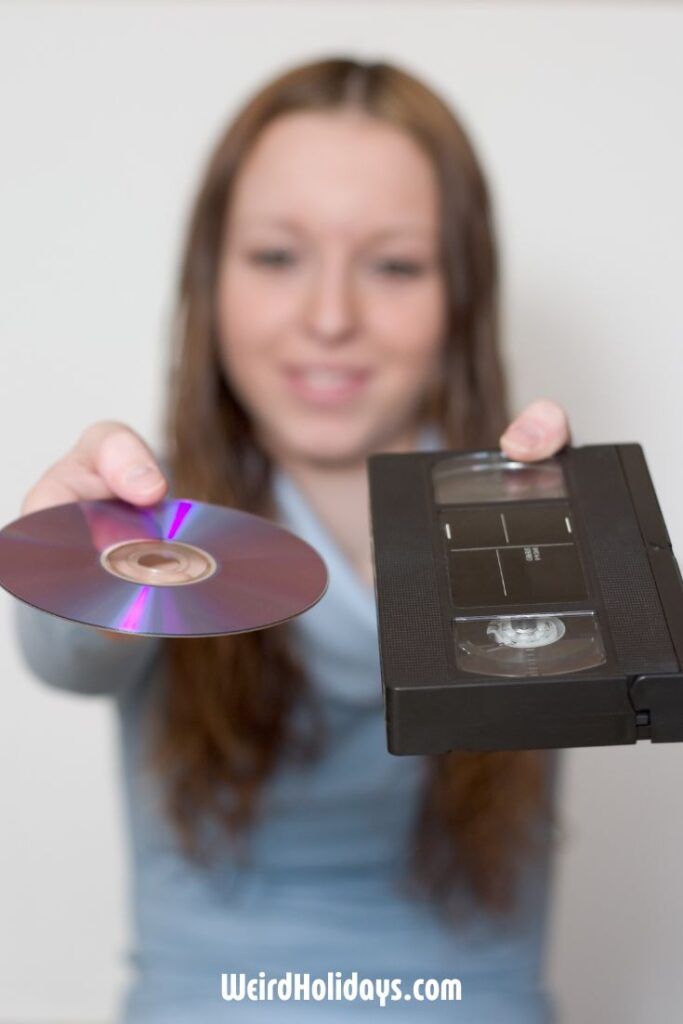
Related Holidays
- National Video Game Day (July 8) ties in well with retro consoles that often shared shelf space with VCRs in the living room.
- Drive-In Movie Theater Day (June 6) pairs perfectly with the holiday, both celebrating nostalgic ways to watch movies outside the cinema.
- National Popcorn Day (January 19) – honors the ultimate movie snack, whether you’re at a theater or curled up watching a VHS at home.
Pin it!
Share this post about National VCR Day on Pinterest!
